Traveler Situation

Is it safe for solo female travelers to go backpacking in Europe ?
Backpacking through Europe is a dream for many adventurous souls, including solo female travelers. However, the question of safety often arises when considering such an endeavor. Here's a comprehensive look at the factors involved: ## General Safety Considerations ### Cultural Awareness - Understanding local customs and norms can help avoid unsafe situations. - Researching ahead about the cultural dos and don'ts of each country can make your travel experience smoother and safer. ### Common Sense Precautions - Basic safety precautions apply universally. - Keep your valuables secure, avoid walking alone at night in poorly lit areas, and stay aware of your surroundings. ### Staying Connected - Having a way to communicate is essential for emergencies. - Consider getting a local SIM card or ensuring your phone plan includes international coverage. ## Specific Risks and Solutions ### Scams Targeting Solo Travelers - Be wary of common tourist scams. - Scammers often target solo travelers, especially females, with tricks like overcharging, fake petitions, or distraction techniques. ### Physical Safety Concerns - Trust your instincts if you feel unsafe. - If a situation or person makes you uncomfortable, remove yourself from the situation. ### Health and Medical Emergencies - Have a plan for medical situations. - Check if your health insurance covers international travel. ## Resources for Solo Female Travelers ### Traveler Communities - Joining communities of fellow travelers can provide support and advice. - Websites and forums like Solo Travel Society and Girls LOVE Travel offer tips, recommendations, and a sense of community. ### Safety Apps - There are apps designed specifically for safety. - Apps like bSafe or Kitestring allow you to alert contacts in case of an emergency or if you need to check in with someone. ### Local Law Enforcement Contacts - Know who to contact in case of an emergency. - Save local emergency numbers in your phone and make note of nearby police stations or consulates that can offer assistance. ## Conclusion ### Personal Responsibility - Your safety is largely in your own hands. - While Europe offers a wealth of experiences for solo female travelers, taking personal responsibility for your safety is key. This includes planning ahead, staying informed, and using common sense. ### Embrace the Journey - Enjoy the adventure while being cautious. - Don't let fear hold you back. With preparation and awareness, backpacking through Europe as a solo female traveler can be a transformative and incredibly rewarding experience.

How can I prepare for an emergency situation ?
The article provides a comprehensive guide on how to prepare for an emergency situation. It emphasizes the importance of being prepared for emergencies, which can strike at any time and pose a threat to the safety of individuals and their loved ones. The first step in preparing for an emergency is to assess the risks that are most likely to affect you. This involves identifying potential natural disasters or man-made emergencies that could occur in your area. Once you have identified these risks, you can begin to develop a plan for how to respond. The next step is to create an emergency kit that contains all the essential items you will need in case of an emergency. This includes water, non-perishable food, a first aid kit, a flashlight, warm clothing, a map of the area, a cell phone with charger, cash, and important documents. Having a plan in place is also crucial in ensuring that everyone knows what to do in case of an emergency. Your plan should include a designated meeting place, an evacuation route, a communication strategy, and a backup plan. Staying informed about local weather reports and news alerts is another important aspect of emergency preparedness. Signing up for community warning systems can also help you stay informed about potential emergencies in your area. Finally, practicing your emergency plan regularly can help ensure that everyone remains calm and focused during an actual emergency situation. This could involve conducting regular fire drills or practicing evacuation routes.

Is it necessary to have a return ticket for a tourist visa application ?
The text discusses the importance of a return ticket for a tourist visa application. It states that a return ticket is necessary to ensure the traveler has plans to return to their home country after the completion of their trip. Other documents required for a tourist visa application include a valid passport, hotel reservation, travel itinerary, financial evidence, invitation letter, travel insurance, application form, and photo. The return ticket is considered important as it shows the embassy or consulate that the traveler plans to return to their home country after their trip, reduces the chances of overstaying their visa period, assures the authorities of departure arrangements, and maintains the integrity of visa policies. If a traveler cannot provide a return ticket at the time of application, there is a high probability of visa rejection. However, an onward journey ticket can be provided as an alternative. Alternatives to a return ticket include one-way tickets, open-ended tickets, refundable tickets, and onward journey tickets. To ensure the availability of a return ticket, travelers should book in advance, choose flexible dates, opt for refundable tickets, and check with airlines about their policies. Not providing a return ticket can lead to visa rejection, blacklisting, impact future applications, and financial losses. Travel agents can assist in getting a return ticket or suggesting alternatives but may charge additional fees.

What do I need to know about VAT refunds when traveling internationally ?
VAT (Value Added Tax) is a consumption tax applied on products or services purchased within a country. International travelers may be eligible for a VAT refund if they purchase goods to take out of the country where they made the purchase, often referred to as "tax-free shopping". To get a VAT refund, travelers must check eligibility, get tax-free forms, keep receipts, procure documents from customs, claim their refund, and be aware of time limits, minimum purchase amounts, fees, and currency conversion. Tips for successful VAT refunds include planning ahead, consolidating purchases, tracking deadlines, verifying retailer participation, and consulting with experts. By understanding the VAT system and following these guidelines, international travelers can potentially save money on their shopping experiences.

What are the basic first aid steps everyone should know ?
Basic first aid steps are essential for everyone to know, as they can make a significant difference in emergency situations. These steps include assessing the situation, checking for response, following the ABCDE approach, treating injuries, handling specific emergencies, monitoring vital signs, and staying calm while reassuring the injured person. It is recommended to take a certified first aid course to learn proper techniques and procedures.

How should a woman respond to compliments in a social situation ?
The text is a topic summary on how women should respond to compliments in social situations. It suggests that they acknowledge the compliment, be sincere, optionally return the compliment, keep the conversation going, avoid being defensive, and maintain eye contact. The tips aim to help women navigate this aspect of social interactions effectively and leave a positive impression on others.

When should I claim Social Security benefits ?
The text discusses the decision of when to start claiming Social Security benefits. It outlines four factors to consider: age and health; work history; financial situation; and marital status. The text suggests that delaying claiming benefits can increase the monthly benefit amount, but this depends on individual circumstances such as health and financial situation. It emphasizes the importance of careful consideration and consulting with a financial advisor before making any decisions.
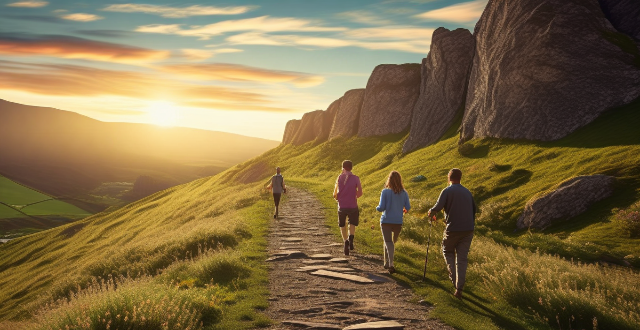
How do I administer CPR correctly in an emergency situation ?
Administering CPR correctly in an emergency situation involves a series of steps to ensure the victim receives proper care until professional help arrives. The key steps include: checking the safety of the scene, calling for help, checking the victim's responsiveness, looking for an AED, opening the airway, checking for breathing, performing chest compressions if the victim is not breathing, giving rescue breaths (if trained), using an AED (if available), and continuing CPR until help arrives or the victim starts breathing normally. The quality of chest compressions is crucial, as they must be hard and fast enough to mimic a heartbeat and force blood out to vital organs.

What role does situational awareness play in personal safety, and how can it be taught during training sessions ?
Situational awareness is crucial for personal safety, enhancing perception, decision making, and response time. It can be taught through real-life scenarios, active observation exercises, self-awareness emphasis, and feedback/debriefing sessions. Incorporating these methods into training programs helps individuals develop their situational awareness skills and become better equipped to handle dangerous situations.

How do I ensure my pets are safe during an emergency situation ?
Ensuring your pets' safety during emergency situations is crucial, and there are several steps you can take to prepare. Firstly, proper identification through microchipping and collar tags is essential. Secondly, having an evacuation plan with a designated caregiver and shelter options is important. Thirdly, preparing an emergency kit with necessary supplies is vital. Fourthly, staying informed about potential emergencies in your area is crucial. Lastly, practicing evacuation drills can help familiarize your pets with the process. By following these steps, you can ensure the safety of your pets during emergency situations.

Are there any specific destinations considered safer for solo female travelers ?
There are several destinations considered safer for solo female travelers, including New Zealand, Iceland, Japan, Sweden, Canada, Finland, Australia, Norway, Slovenia, and Chile. These countries are known for their low crime rates, women-friendly cultures, and well-developed tourism infrastructures that cater to solo travelers. However, personal safety also depends on individual behavior and awareness while traveling. It's always recommended to research specific regions, follow local guidelines, and trust your instincts when exploring new places.

How can I contribute to conservation efforts while on a wildlife tour ?
Conservation efforts are crucial for the survival of many animal species. As a responsible traveler, you can contribute to these efforts while enjoying your wildlife tour by following these guidelines: 1. Respect wildlife and stay on designated paths. 2. Do not litter or remove natural objects. 3. Report any illegal activities related to wildlife. 4. Support local conservation organizations through donations, volunteering, educational programs, adopting an animal, and spreading awareness. 5. Practice sustainable tourism by choosing eco-friendly accommodations, using public transportation or carpooling, purchasing local products, minimizing water usage, and educating yourself before traveling. By following these guidelines, you can make a positive impact on the environment and contribute to conservation efforts while enjoying your wildlife tour.

Where can I find reviews and ratings for different luxury resorts ?
When searching for reviews and ratings of luxury resorts, reliable sources include online travel agencies (OTAs) like Booking.com, Expedia, Agoda, and TripAdvisor; luxury travel forums and blogs such as Luxury Travel Diary, The Luxury Travel Expert, and JustLuxe; official resort websites featuring guest testimonials and experiences; social media platforms like Instagram, Facebook, and Twitter; consumer reporting websites Trustpilot, Consumer Affairs, and Yelp; word of mouth recommendations from friends, family, travel agents, and tour operators; professional reviews and awards from Condé Nast Traveler, Forbes Travel Guide, and Travel + Leisure; video reviews and vlogs on YouTube, Vimeo, and TikTok; and industry publications and magazines like Luxury Travel Magazine, Departures, and Robb Report.

What are the best places to go for adventure travel in Asia ?
Asia is a continent filled with diverse cultures, breathtaking landscapes, and thrilling adventures. Whether you're seeking adrenaline-pumping activities or off-the-beaten-path explorations, Asia has something to offer every type of adventure traveler. Here are some of the best places to go for adventure travel in Asia: 1. Nepal - Trekking and Mountaineering 2. Thailand - Island Hopping and Water Sports 3. Vietnam - Motorbiking and Rock Climbing 4. Indonesia - Volcano Hiking and Diving 5. Japan - Skiing and Hot Springs
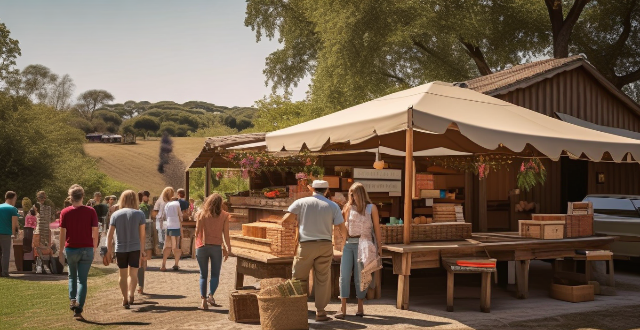
Are there any restrictions on who can shop at duty-free stores ?
Duty-free shopping offers savings for international travelers, but not everyone can shop tax-free. Eligibility criteria include traveling internationally, being a departing or arriving passenger, having connecting flights outside the country, and complying with quantity limits and customs regulations. Restrictions may apply based on age, nationality, transit status, visa requirements, and security concerns. Understanding these guidelines helps travelers make the most of duty-free opportunities.

Are there any apps that help in planning a road trip route with attractions and food stops ?
When planning a road trip, there are several apps available that can assist in route planning, finding attractions, and discovering food stops and restaurants. Google Maps offers turn-by-turn directions, points of interest, and customization options. Roadtrippers helps plan a comprehensive itinerary, suggests interesting places to visit, and offers themed trips. Sygic Travel provides information on top attractions, offline maps, and route optimization. Waze offers real-time traffic updates, community-driven features, and voice commands for safer driving. For food stops and restaurants, Yelp provides restaurant reviews, filtering options, and user photos. OpenTable allows reservations, dining specials, and cuisine type filtering. Zomato offers menu viewing, user ratings, and food photos. TripAdvisor provides traveler reviews, top restaurant listings, and nearby options. Combination apps like TripIt offer itinerary management, attraction and dining suggestions, and integration with other apps. Maps.me provides offline maps, POI categories, and custom routing. RV Trip Wizard plans RV-friendly routes, includes campground information, and lists attractions and restaurants suitable for RVers. TouristEye accesses pre-made guides, creates custom itineraries, and allows collaborative planning. Overall, these apps make it easier than ever to plan the perfect road trip by combining features such as route planning, finding attractions, and discovering food stops and restaurants into one comprehensive tool.
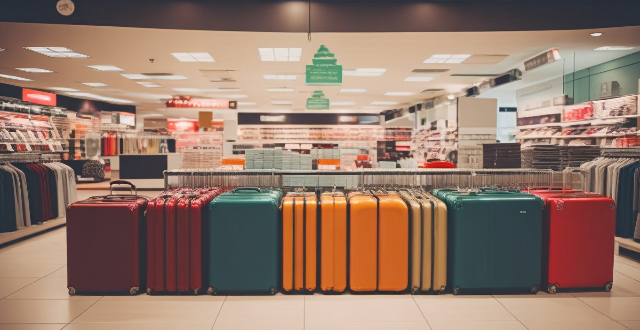
What should I consider before buying luxury items in a duty-free store ?
When considering purchasing luxury items in a duty-free store, one should keep in mind their budget, the authenticity of the item, price comparison, return policy, warranty coverage, potential tax refunds for international travelers, and customs regulations.
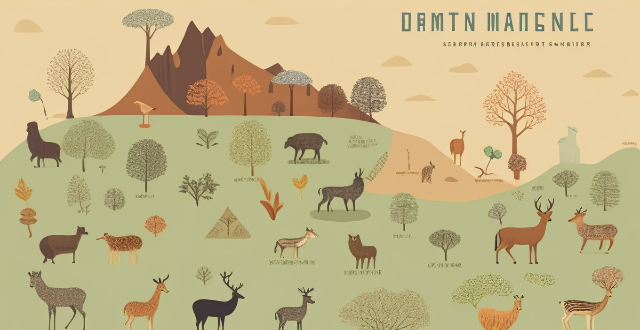
What is ecotourism and how does it contribute to climate change adaptation ?
Ecotourism is a form of sustainable tourism that aims to conserve the environment, benefit local communities, and educate travelers about natural and cultural heritage. It contributes to climate change adaptation by promoting activities with low carbon emissions, funding conservation projects, empowering local communities, educating tourists about environmental issues, supporting sustainable agriculture, and protecting biodiversity.

What are the most popular tourist attractions in Africa ?
Africa, the second-largest continent globally, is a treasure trove of diverse landscapes, cultures, and wildlife. It boasts numerous popular tourist attractions that attract visitors worldwide. Here are some of the most sought-after destinations: 1. **Pyramids of Giza, Egypt** - One of the Seven Wonders of the Ancient World, these massive structures were built over 4,500 years ago as tombs for pharaohs and their consorts. 2. **Serengeti National Park, Tanzania** - Renowned for its annual wildebeest migration, an awe-inspiring natural spectacle where millions of animals move across the plains in search of fresh pasture. 3. **Victoria Falls, Zambia/Zimbabwe** - Known as "Mosi-oa-Tunya" ("The Smoke That Thunders") due to the mist that rises when the Zambezi River plunges down the falls. It's one of the largest waterfalls in the world. 4. **Table Mountain, South Africa** - A flat-topped mountain offering panoramic views of Cape Town and surrounding coastline, accessible by cableway or a hike up. 5. **Sossusvlei Dunes, Namibia** - A clay pan surrounded by towering red sand dunes in the Namib Desert, famous for its stark beauty and a photographer's paradise, especially during sunrise and sunset. 6. **Maasai Mara National Reserve, Kenya** - Part of the larger ecosystem that includes the Serengeti, known for its population of big cats and the annual wildebeest migration. 7. **Okavango Delta, Botswana** - A unique inland water system that floods seasonal grasslands and creates a lush habitat teeming with wildlife, ideal for mokoro (dugout canoe) safaris and walking safaris. 8. **Mount Kilimanjaro, Tanzania** - The highest peak on the African continent and a dormant volcano, offering various trekking routes to the summit, each with distinct scenery and challenges. 9. **Djemaa el Fna, Morocco** - The main square in Marrakech's old city, a vibrant marketplace by day and a lively performance space at night, filled with musicians, dancers, snake charmers, and food stalls. 10. **Essaouira, Morocco** - A charming coastal town known for its well-preserved Swahili architecture, bustling port, and windy beaches perfect for windsurfing and kiteboarding. These are just a few of the many captivating destinations that Africa has to offer. Each country brings its own unique blend of culture, nature, and history, making it a continent rich with possibilities for any traveler seeking adventure and discovery.

Can I save money by shopping at duty-free stores when traveling abroad ?
Duty-free shopping can be a cost-effective way for travelers to purchase goods, offering tax-free prices and exclusive products. However, it's essential to consider potential drawbacks such as higher base prices, limited selection, and impulse buying. To make the most of duty-free opportunities, travelers should research beforehand, set a budget, and understand customs regulations. By doing so, they can potentially save money while enjoying the convenience of shopping at their travel destinations.

How can female travelers identify and avoid potentially risky areas or situations ?
In this guide, we discuss strategies for female travelers to identify and avoid potentially risky areas or situations. Key strategies include researching local culture, checking travel advisories, using reliable sources for accommodation and transportation, trusting instincts, staying alert, choosing safe modes of transportation, sticking to well-lit and busy areas, making friends with locals, and keeping emergency contact information handy. By taking these precautions, female travelers can reduce risks and focus on enjoying their journeys.

How can women stay connected with friends and family back home for safety purposes while traveling ?
Women can stay connected with friends and family for safety purposes while traveling by using regular check-ins, social media updates, emergency contact apps, email updates, messaging platforms, portable chargers and Wi-Fi solutions, safety apps, pre-planned signals, traditional mail, and wearable technology. These methods ensure effective communication and peace of mind for both the traveler and their loved ones.

Can AI replace human decision-making in complex situations ?
Artificial intelligence (AI) has made significant strides in recent years, leading to discussions about its potential to replace human decision-making in complex situations. While AI possesses certain advantages, such as speed and accuracy, it still faces limitations that prevent it from fully replacing humans in decision-making processes. Advantages of AI in decision-making include speed and efficiency, accuracy and consistency, and scalability. However, AI also has limitations such as lack of creativity, ethical considerations, and interpretability. Examples of complex situations where AI may not replace human decision-making include medical diagnosis, legal judgments, and business strategy. In conclusion, while AI has the potential to assist humans in decision-making processes, it cannot fully replace them in complex situations. The combination of AI's analytical capabilities and human creativity, ethics, and intuition will likely lead to better outcomes in these scenarios.

What are the benefits and challenges of using virtual reality in teacher training ?
Virtual reality (VR) can provide an immersive and interactive environment for teacher training, allowing trainees to experience real-life scenarios and practice their teaching skills in a safe and controlled setting. This can help them develop confidence and improve their ability to handle various situations that may arise during their career. VR can simulate real-life situations such as classroom management, student behavior, and curriculum implementation. This allows trainees to practice their problem-solving skills and decision-making abilities in a risk-free environment. By experiencing these situations firsthand, they can better understand the challenges and complexities of teaching. However, there are also challenges associated with using VR in teacher training. The high cost of technology, limited availability of content, technical issues and maintenance, and health concerns are some of the main challenges. Despite these challenges, VR has the potential to revolutionize the way educators are prepared for their roles. As technology continues to advance, it will be interesting to see how VR evolves and becomes more accessible for teacher training programs.
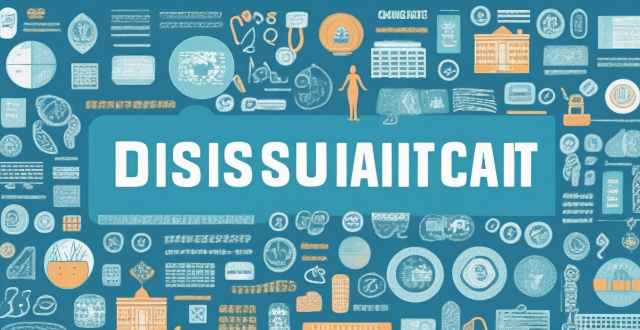
What measures can be taken to prevent the spread of infectious diseases across borders ?
The text discusses measures to prevent the spread of infectious diseases across borders, including surveillance and early warning systems, travel restrictions and border controls, vaccination programs, public health infrastructure and preparedness, collaboration and information sharing, and education and public awareness. The Global Health Security Agenda (GHSA) promotes robust surveillance systems for early detection of outbreaks, while the International Health Regulations (IHR) require countries to develop core public health capacities. Travel restrictions such as entry/exit screening and quarantine policies can help prevent introduction of diseases into new regions. Vaccination programs, including routine immunization and vaccination requirements for travelers, reduce the risk of disease spread. Strong public health infrastructure and emergency response plans are crucial for containing outbreaks. Collaboration and information sharing through global health security initiatives and open access to data enable quicker identification of patterns and trends. Education and public awareness campaigns can reduce transmission rates and discourage travel to high-risk areas. By implementing these measures, countries can work together to protect public health globally.

How do I choose the perfect island resort for my needs ?
When searching for the ideal island resort, consider yourWhen searching for the ideal island resort, consider your, desired amenities, and seek consider your budget, interests, location, desired amenities, and seek out reviews and recommendations. Look for deals to ensure you find a resort that meets your needs and preferences while staying within your financial means.

What are the most popular cultural experiences in South America ?
South America offers diverse cultural experiences like the Rio Carnival, Machu Picchu, tango in Buenos Aires, and more. These attractions provide insights into the continent's rich heritage and daily life of local communities, making any visit a transformative adventure.

How do I find the best restaurants while on a trip ?
Finding the best restaurants while traveling enhances the overall experience by allowing travelers to savor local cuisine. Here's a breakdown of strategies for discovering great eateries: 1. **Research Before You Go**: Utilize online reviews, blogs, and social media platforms for recommendations. 2. **Use Technology Wisely**: Leverage food apps and Google Maps for real-time information and user ratings. 3. **Ask the Locals**: Hotel staff and tour guides often have valuable insights into the best dining spots. 4. **Be Open to Serendipity**: Explore neighborhoods and engage with local shopkeepers for off-the-beaten-path finds. 5. **Consider These Points**: Pay attention to cuisine variety, dietary restrictions, and budget when choosing restaurants. 6. **Post-Meal Activities**: Leaving reviews and sharing experiences can help other travelers and support local businesses.